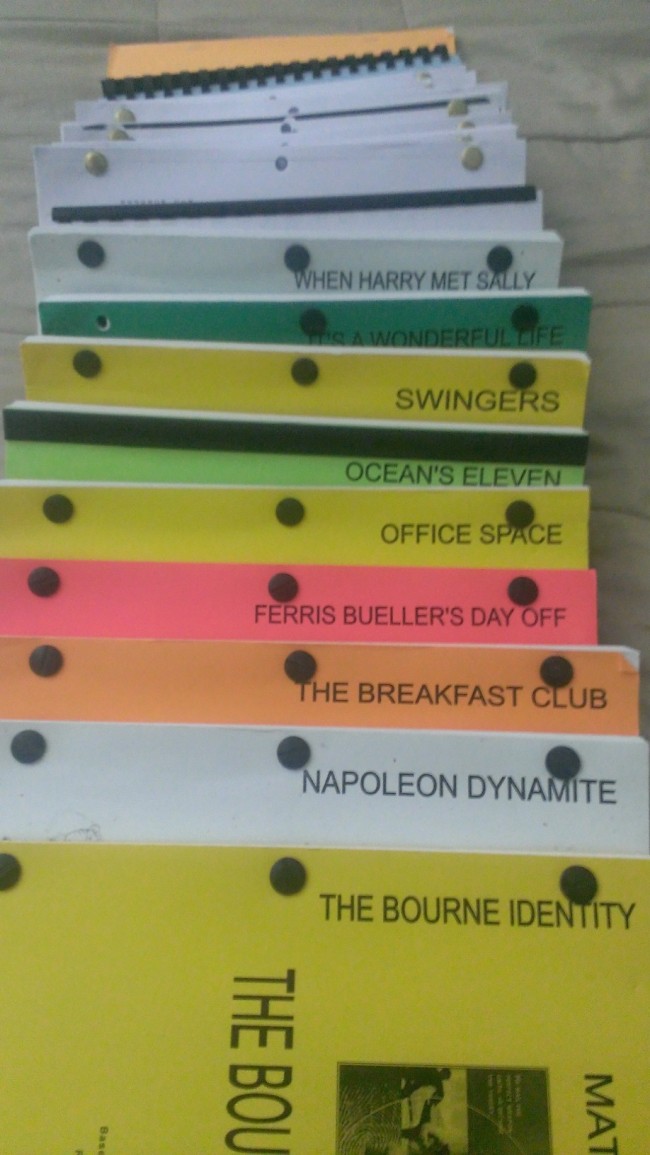A couple months back, an old friend asked me for some advice…
Is there any value to a REALLY good idea for a blockbuster film that has not been made? If so, how would one proceed without being taken advantage of? Of course, I do not have a script, just an idea that would make tons of money developed and produced.
Now as you know, if you have read the About, I’m not actually in the industry, officially; for me, screenwriting remains a hobby. I am, however, happy to share what I have learned about this scenario.
Is there value? Potentially, YES!
How? With patience and persistence!
General Pursuit of Hollywood
Let me set expectations. A story idea, from the wild, is statistically one of the rarest successes in present day Hollywood. Even if that story is written into a script, the odds are incredibly low if it is not written by someone with the right connections. These scripts, specs as they are called (speculative script), are uncommissioned/unsolicited screenplays.
A couple of decades ago, spec scripts were seeing a gold rush – hundreds of scripts options and sales in a year, many in the six-figures. This year, only a couple dozen scripts will make the cut, and typically in the tens-of-thousands range. Script Pipeline provides reporting on spec sales.
Yet, there are success stories out there, even today. That slim sliver of hope is all that screenwriters, like me, need to keep the faith! So read on, dear friend – if your idea is as good as you hope, it’s worth taking a shot!
The very first thing you should do is register your idea with the WGA. Here, you can register just about anything to provide a record of the intellectual property. Keep this registration current as your idea progresses.
As for what is next, the first question I would ask, is, are you interested only in selling the idea or do you want to be involved more? If you just want to pitch the idea and get a “Story By” credit if it ever gets made, then I would suggest you take advantage of logline pitch opportunities. There are online sites like Virtual Pitchfest, and whole host of in-person pitch opportunities in L.A. (and other cities).
To do this successfully, you need to pen a great logline – check various online sources for how to write a great logline. If you want to take it further, you can write an outline or prepare a ‘one sheet’ to share with potential pitch-ees.
If you would like to try your hand at writing, you can. If you would like to partner with a writer, you could try a personal connection or reach out to the manager of a professional. Directories of professionals in the industry are available in various formats, typically for a fee. If you have someone specific in mind, you should try to hunt down their representation and see if they accept unsolicited ideas. They may of course just pass, but they also might take on the project or pitch the idea upstream. In any event, once you have a script in hand that you are satisfied (plan for writing and rewriting and rewriting from various feedback and coverage options), there are more ways to pitch than when you have just the idea – including many, many screenplay competitions.
Another option is to pitch the idea to a known producer or director; I think those are going to be much harder to cold-call (many have solicitation policies), so I would try to find a personal connection somehow. And of course there are the production companies and studios – which are also easily found in various directories but you’ll need to follow the policies for unsolicited materials here, as well.
All of this said, you said this was a blockbuster idea, and the blockbuster idea – assuming it is a big action or other widely-appealing story (particularly internationally) – does give you the best chance of success in modern day Hollywood. Fewer movies are being made because fewer people are going to the theater. When people do turn out for a movie, it is typically a blockbuster movie; and people particularly love stories with worlds prime for a big franchise.
Non-Traditional Studios
Thanks to digital media there are opportunities outside of the big studios. For example, Amazon Studios accepts submissions of scripts and concepts. Netflix has also started partnering in productions of movies Hollywood turned town. The Blacklist is a great accessible industry community, starting from a survey about top scripts that hadn’t been made into films.
Indie Route
So, say you decide that this sounds too daunting and you really just want to see your movie get made, period. Then you have to consider the independent route. Today, the barriers to entry for filmmaking have truly never been lower. Equipment is easy to come by and every town has some kind of film community or program that people can plug into. Find a writer and film staff and you could be on your way; some don’t even go that far and just film on their iPhones. Once your concept starts to take shape, you can take your ideas to the crowd. Once you have the perfect film in the can, you can submit it to film festivals around the country and globe.
If you aren’t completely sure of your idea, some pros have suggested starting with a solid short and seeing where it takes you.
The Four Ps
Above I mentioned the need for patience and persistence; I always add passion and perseverance when talking about anything you want to do or accomplish. All four are ultimately what you’ll need to see something through (and, probably, a bit of luck), but I hope that this post has helped you develop an understanding of how to tackle that big idea!
April




